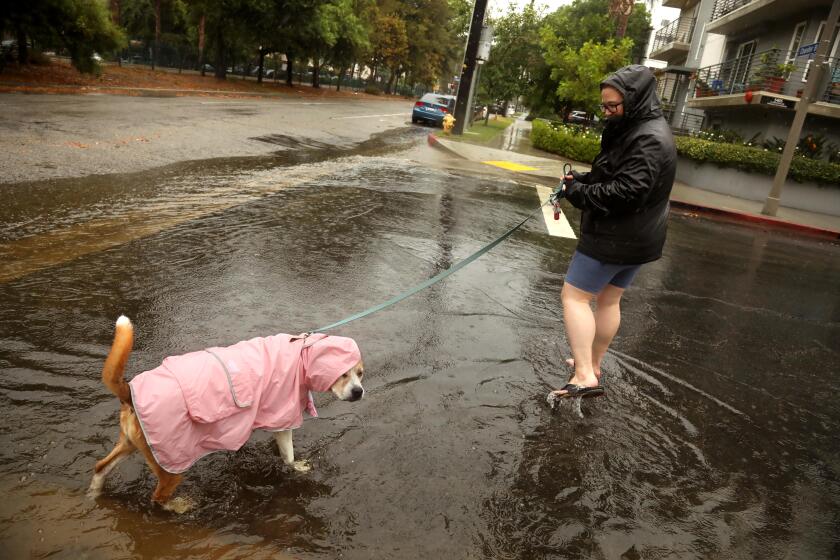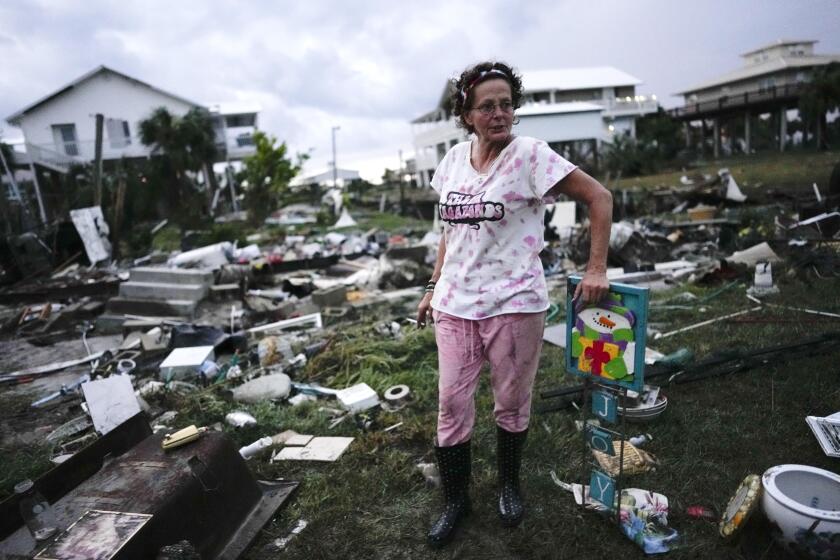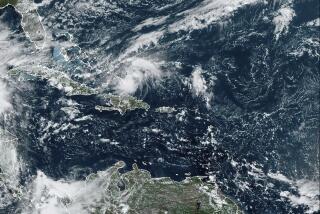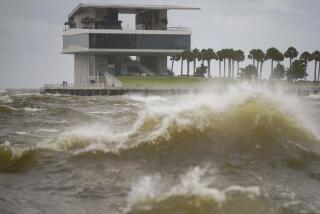Hurricane Lee, the season’s first Category 5 storm, churns through the Atlantic
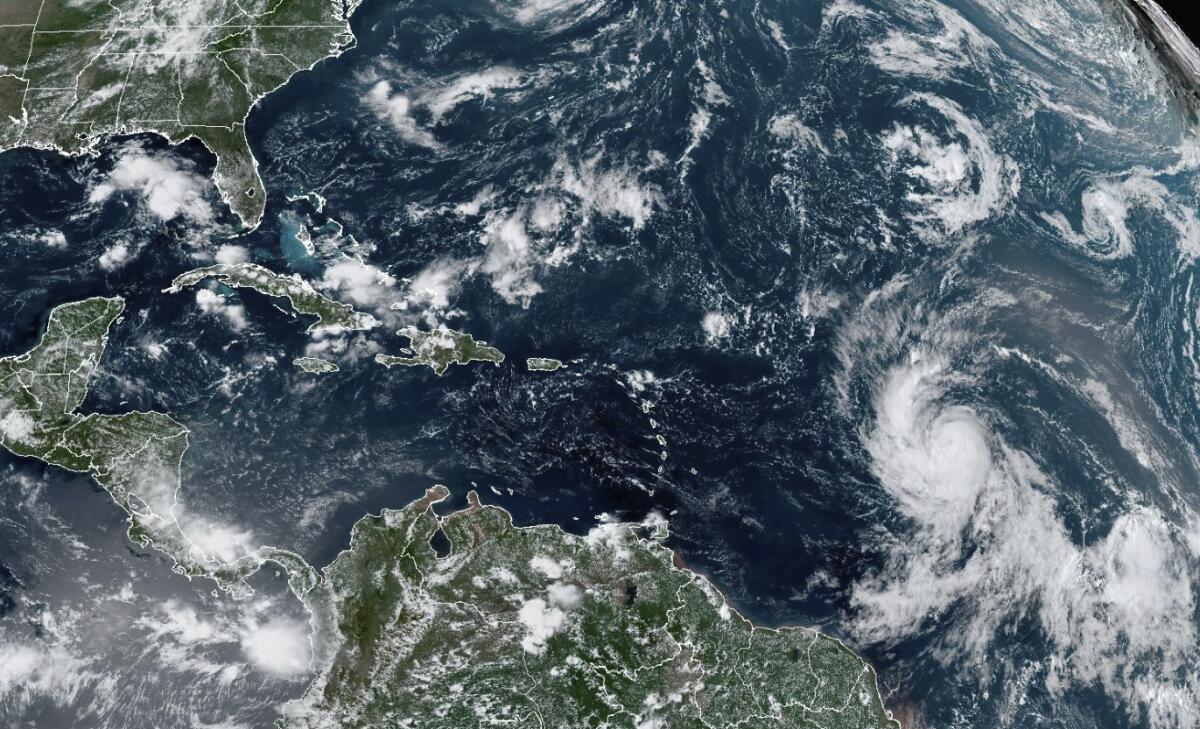
- Share via
SAN JUAN, Puerto Rico — Hurricane Lee charged through warm Atlantic waters Friday as the season’s first Category 5 storm, threatening to unleash heavy swells across the northeast Caribbean.
The hurricane is not expected to make landfall, but meteorologists warned that it would generate dangerous waves of up to 15 feet across the northern coast of Puerto Rico and other nearby islands. While Lee is on a path that would take it a couple hundred miles northeast of the Caribbean, tropical storm conditions are not forecast for the region.
“Although the hurricane is incredibly powerful, its wind field is not particularly large,” the National Hurricane Center said.
The hurricane was about 630 miles east of the northern Leeward Islands. It had winds of up to 165 miles per hour and was moving west-northwest at 14 mph.
Lee is expected to keep strengthening and reach winds of up to 180 mph. Only seven Atlantic hurricanes have had winds of that magnitude since 1966, according to Colorado State University hurricane researcher Phil Klotzbach. Among those was Hurricane Dorian, which pummeled the northern Bahamas in 2019 as a Category 5 storm, hovering over small islands for about two days.
The center said that dangerous surf and deadly rip currents would probably hit the northern Leeward Islands later Friday. They would spread to Puerto Rico, Hispaniola, the Turks and Caicos, the Bahamas and Bermuda over the weekend.
Days of preparedness ahead of Hilary appear to have paid off in L.A. No traffic fatalities were reported on city streets despite the record rain.
“We will see waves between 10 and 15 feet, so we don’t want anyone on the beaches,” said Ernesto Morales of the National Weather Service in San Juan.
The National Hurricane Center said dangerous surf and rip currents were forecast for most of the U.S. East Coast starting Sunday.
President Biden on Thursday was given the hurricane’s latest trajectory and details of preparations underway by the Federal Emergency Management Agency, which deployed unidentified assets to Puerto Rico and the U.S. Virgin Islands, according to the White House.
Lee is the 12th named storm of the Atlantic hurricane season, which runs from June 1 to Nov. 30 and peaks in September.
Idalia leaves a trail of flooding and devastation and ongoing power outages in Florida, Georgia and the Carolinas.
Tropical Storm Margot became the 13th named storm after forming Thursday evening. It was some 460 miles west-northwest of the Cabo Verde Islands. It had winds of up to 40 mph and was forecast to strengthen into a hurricane over the weekend. It was moving west-northwest at 16 mph and is expected to remain over open water.
The National Ocean and Atmospheric Administration in August forecast between 14 and 21 named storms this season, with six to 11 of them expected to become hurricanes and, of those, two to five possibly developing into major hurricanes.
In the Pacific, Hurricane Jova churned through open waters far from Mexico’s southwest coast as a Category 2 storm. It posed no threat to land.
It was about 685 miles west-southwest of the southern tip of Baja, California, and was moving west-northwest at 16 mph, with winds up to 110 mph.
More to Read
Sign up for Essential California
The most important California stories and recommendations in your inbox every morning.
You may occasionally receive promotional content from the Los Angeles Times.
